Exhibits
Link to download discussion questions and archival images.
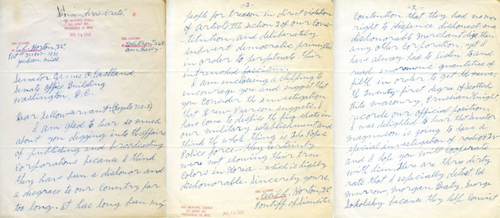
Fig. 1. Handwritten letter dated 14 July 1955 from Cecil L. Horton to U.S. Senator James O. Eastland.
Discussion Questions: Accountability and Investigation – War on News
At what point does fake news become the responsibility of the public? Can we trust news outlets to regulate each other?
How has the relationship between the media and the government changed over time?
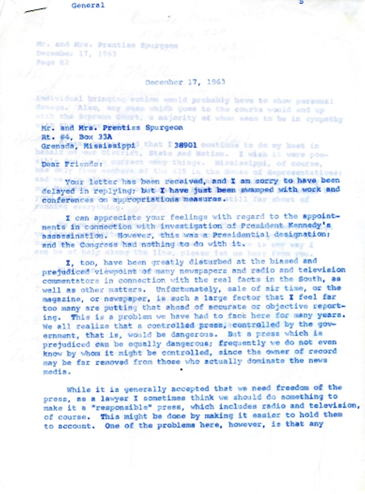
Fig. 2. Carbon typed letter dated 17 December 1963 from Mr. & Mrs. Prentiss Spurgeon to "Dear Friends." Jamie L. Whitten Collection (Series 35, Folder "Media/Press 1963"). Archives & Special Collections, University of Mississippi.
Discussion Questions: Media Bias in the 1960s
Whitten makes several key statements regarding media bias.
How many of these points still hold up today? What has changed about the media and their portrayal of news?
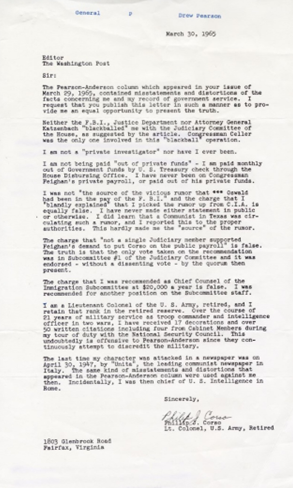
Fig. 3. Typed letter dated 30 March 1965 from Phillip J. Corso to Editor, Washington Post. Jamie L. Whitten Collection (Series 35, Folder "Media/Press 1965"). Archives & Special Collections, University of Mississippi.
Discussion Questions: Corrections and Retractions
How has the internet (particularly social media) made the process of tracking and correcting false statements more difficult? Has it made the process easier in any way?
How do prominent public figures address these issues today? Do news sources still publish corrections or retractions?
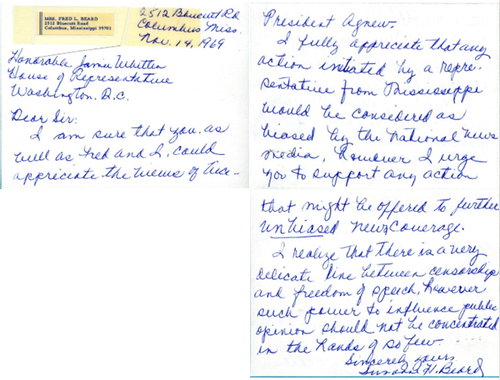
Fig. 4. Handwritten letter dated 14 November 1969 from Mrs. Fred L. Beard. Jamie L. Whitten Collection (Series 35, Folder "Media/Press 1969"). Archives & Special Collections, University of Mississippi.
Discussion Questions: More Sources = Better News?
Does having a greater number of news outlets automatically improve the quality or objectivity of the content?
Do you think there are still a few large corporations controlling most of our news? What or who comes to mind?
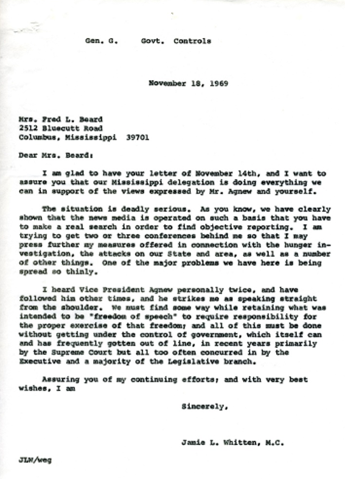
Fig. 5. Carbon typed letter dated 18 November 1969 from U.S. Representative Jamie L. Whitten to Mrs. Fred L. Beard with attached handwritten letter dated 14 November 1969 from Mrs. Fred L. Beard. Jamie L. Whitten Collection (Series 35, Folder "Media/Press 1969"). Archives & Special Collections, University of Mississippi.
Discussion Questions: Needle in a Haystack
Here, Whitten asserts that citizens have to make a point of searching for objective news, relying on their own efforts and capabilities to find unbiased reporting.
Is that still true today?
What are some factors of our information environment that make it easier or harder to find real news?
- Handwritten letter dated 14 July 1955 from Cecil L. Horton to U.S. Senator James O. Eastland. James O. Eastland Collection (File Series 3, Subseries 1, Box 123, Folder 68). Archives & Special Collections, University of Mississippi.
- Carbon typed letter dated 17 December 1963 from Mr. & Mrs. Prentiss Spurgeon to "Dear Friends." Jamie L. Whitten Collection (Series 35, Folder "Media/Press 1963"). Archives & Special Collections, University of Mississippi.
- Typed letter dated 30 March 1965 from Phillip J. Corso to Editor, Washington Post. Jamie L. Whitten Collection (Series 35, Folder "Media/Press 1965"). Archives & Special Collections, University of Mississippi.
- Handwritten letter dated 14 November 1969 from Mrs. Fred L. Beard. Jamie L. Whitten Collection (Series 35, Folder "Media/Press 1969"). Archives & Special Collections, University of Mississippi.
- Carbon typed letter dated 18 November 1969 from U.S. Representative Jamie L. Whitten to Mrs. Fred L. Beard. Jamie L. Whitten Collection (Series 35, Folder "Media/Press 1969"). Archives & Special Collections, University of Mississippi.
